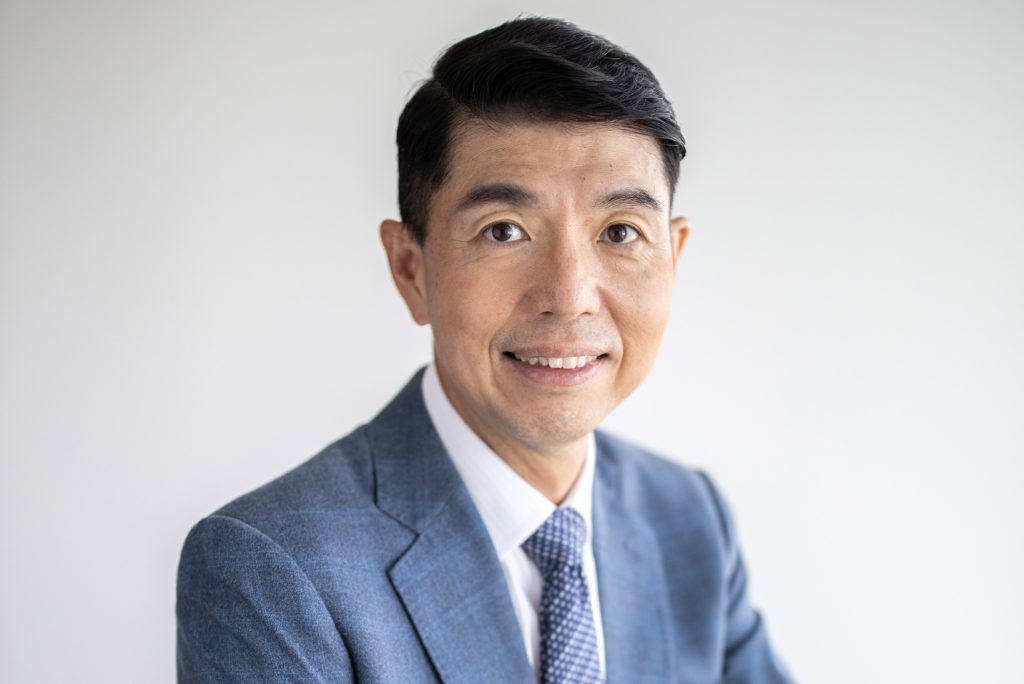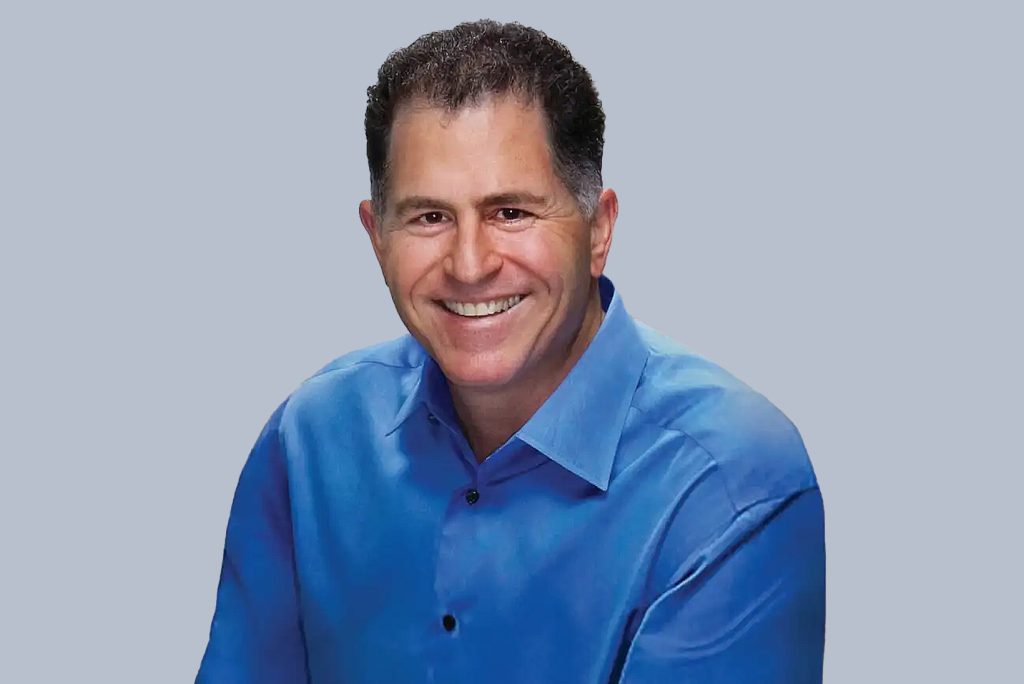May 29, 2024
Building an ecosystem is no easy endeavour – an economy of interconnected solutions and services created with the sole purpose of feeding insatiable market appetite.
Not every product or philosophy can warrant a network of players joining forces in such a manner, nor is the whole always greater than the sum of its parts.
But the jury is no longer out on artificial intelligence (AI), rather a verdict has been returned with emphatic authority.
“Undoubtedly, there’s huge interest – both customers and partners,” confirmed Tian Beng Ng, Senior Vice President and General Manager of Channels across Asia Pacific and Japan (APJ) at Dell Technologies.

In a sense, AI interest is not the problem. This technology has captured the hearts and minds of corporate and consumer audiences for more than 18 months, triggered by the launch of ChatGPT in November 2022 and sustained by the introduction of new tools and systems along the way.
For today and tomorrow however, implementation is everything.
“The most common question is, how do we get started?” Tian Beng said. “We’re seeing our largest customers in the enterprise moving beyond running pilots and proof of concepts [POCs] into actually deploying solutions. That is happening now and will be a natural progression down the market into smaller customers.”
Following a 12-month period of GPU-as-a-service (GPUaaS) adoption to maximise machine learning capabilities, the enterprise is now entering foot on the accelerator territory. The gloves are off for many organisations across the region – whether that be in Australia, Singapore, Korea, Japan or India.
In response, AI ecosystems are being assembled with expert partners to service a market bolstered by new technologies and bound by new rules of engagement.
“Partners are ready but the market has come to the realisation that nobody can do this alone – collaboration is key,” added Tian Beng, speaking on the sidelines of Dell Technologies World 2024 in Las Vegas.
While definitions vary, INSEAD outlined the key components and roles within a market-leading ecosystem:
Jockeying for prime position at the centre is Dell, armed with an AI Factory and AI Focus Partner Network – one validated solution for customers, supported by one network of cutting-edge specialists.
Both represent the first cogs in the first wheel of the first attempt at building an AI ecosystem at this level of scale, from the ground up in APJ and across the world.
The Tech Enabler + The Complementors: Understanding enterprise AI intentions
Rolled out to offer customers access to an AI portfolio from device to data centre to cloud, AI Factory is a suite of solutions underpinned by an open ecosystem of technology partners creating AI applications at the top of the stack.
Collaboration with Hugging Face will provide on-premises deployment of GenAI models while a continued partnership with Meta will simplify deployment of Meta Llama 3 models to provide test results, performance data and deployment recipes.
Alignment with Microsoft Azure AI Services will speed deployment of AI services, such as speech transcription and translation capabilities.
Meanwhile, an expanded alliance with Nvidia now includes new server, edge, workstation, solutions and services advancements.
The full-stack offering – which spans computing, networking and software – is designed to drive the copilots, coding assistants, virtual customer service agents and industrial digital twins of the digital enterprise.
“It’s not going to be easy to implement all of this – we need a lot of help from partners,” acknowledged Michael Dell, Chairman and CEO of Dell. “This is going to require a whole new wiring of everything that happens in the enterprise.
“The key input in the factory is data and it requires new networking, new storage, new compute and new capabilities for customers to realise the opportunity.”
In an ecosystem environment, success is dependent on helping other companies innovate.
When Nestlé went mainstream with Nespresso, a network of manufacturers was cultivated. Airbnb understood the benefits of the sharing economy to revolutionise the accommodation space. Apple built the App Store to unleash a new ecosystem of software development innovation.
“Partners are one of the most enduring advantages that we have,” Dell outlined. “This is really a strength of the company and we have one of the biggest ecosystems in the industry. That means we can listen and learn, then innovate, localise and deliver unmatched value around the world. And that’s never been more important.”

Citing the value of data and storage in the AI equation, Dell outlined the importance of current infrastructure partners building capabilities at pace – “use your big ears to understand the new customer requirements”.
The vendor is betting the house on this message landing. During FY24, partners contributed approximately 50% of net revenue which equates to roughly $44.2 billion in USD, following an annual return of $88.4 billion. Also, more than 60% of all new and reactivated buyers came via the channel.
“If partners are doing the same thing as a couple of years ago, that’s probably not going to work out too well,” Dell cautioned. “We’ve all got to step it up and build these new capabilities because customers value our expertise. So help them figure out the use cases.”
Building on the opportunity ahead, Denise Millard – Chief Partner Officer at Dell – stressed that the “stakes have never been greater” in relation to selecting the right partners in the age of AI.
Throw cloud, cyber security and edge computing into the mix and the challenges are “far too complex and too pervasive” for any vendor or partner to chart the path forward alone.
“It’s all about growing faster than the market,” Millard said. “The play is through innovation, through commitment and through value creation.”
According to Millard, the shift to AI is “multi-dimensional” for organisations, requiring new architecture that current data centres are ill equipped to handle. This is aligned to the belief that AI should travel to data and not the other way around, advocating the value of running workloads on-premises as opposed to public cloud.
“Modern workloads require modern infrastructure,” Millard shared. “Customers are also shifting to multi-cloud environments and are rethinking virtualisation strategies.
“They are being asked to managed cost and risk running workloads across different environments, hence the massive increase in demand for flexible platforms that support multiple hypervisors.”
According to Moxie Research – which surveyed more than 590 IT decision-makers across APJ between November 2023 and May 2024 – organisations will increase investment in key technology solutions during the next 6-12 months, spanning:
Notably, AI and machine learning deployments rank as the no.1 priority for end-user organisations in Australia, Singapore, Malaysia and Indonesia.
“The bottom line is that customers need help from partners to deploy and manage cloud and virtualisation strategies – quickly and easily,” Millard added.
“We know the customer journey is changing. Many want fewer, more trusted, strategic partners coming to the table together, working to solve their most complex business challenges.”
The Partners: Assembling a focused network of AI specialists
To expedite the development of AI deployments in market – and equip partners with the tools to advance specialised practices – Dell has rolled out the AI Focus Partner Network.
This initiative recognises partners that demonstrate “advanced AI capabilities” with increased visibility, opportunities to grow their AI business, third-party training and resources to develop AI use cases and POCs in collaboration with Dell. Integration with the vendor’s AI solutions portfolio and professional services team will also be available.
“For partners building meaningful AI capabilities, this provides access to Dell validated designs,” Millard noted. “We’re committed to co-engineering to ensure deployments are repeatable and scalable and partners don’t have to figure this out on their own.”
Access to Dell solution centres is designed to showcase AI workloads and use cases, supported by a desire to help partners build AI labs to run test projects at pace.
“We’re also bringing in new AI competencies and certifications,” Millard explained. “When partners are part of this network – and they achieve all of those things – they can accelerate their metal-tier status.”

Nine months in the making, Millard said Dell has been painstakingly assessing the metrics of partners success in relation to AI.
“This whole concept wasn’t just invented in a day,” Millard clarified. “We don’t have all the answers and this will evolve.”
With some partners already included in the pilot stage – and others expected to be on-boarded in the coming months – the priority for Dell is now two-fold:
“The potential is clear and partners want to get started now,” Tian Beng added. “The AI Factory has made that process easier given it encompasses servers, storage, networking and the enterprise AI software suite from Nvidia.
“Because this is a validated solution set, partners can now get trained to start implementing and deploying – either working on their own or through Dell Professional Services.”
Supporting such efforts in APJ is a Singapore-based team specialising in AI, housing data scientists that are primarily used in pre-sales settings.
But despite ecosystem interest reaching fever pitch, not every organisation will be able to participate in the way they desire. Therefore, the options on the table are build or partner.
Building is almost exclusively reserved for global system integrators (GSIs), those with pockets deep enough to adopt industry-based approaches and build enormous cross-country teams to execute.
Notable players in this space include Accenture – which is set to invest more than $3 billion on scaling AI capabilities alone – and Unisys, in addition to Deloitte, EY and Cognizant among others.
“Not many partners can do everything,” Tian Beng added. “Some have the money to invest and will continue to hire data scientists and technical expertise but not everyone can build out a standalone practice. For those that can’t, options exist.”
A role will always exist for partners committed to only selling infrastructure but should intentions change amid a desire to go up the value chain in the areas of AI consultancy and building LLMs, that’s when building a new team or partnering up are the two clear avenues of progression.
“Most will partner to deliver an AI outcome,” Millard advised. “AI is not easy but lots of very specific small partners can also play a huge role. They may not be massive resellers of technology but they possess important AI skills and should be rewarded for those capabilities.”
Alternatively, partners lacking AI skills can transact via the ecosystem to realise the “benefits of selling at scale”.
“Our partner program will always have a tiered structure component that is aligned to revenue but we recognise the investment required to build out skills in AI and cloud,” Millard added. “We want to reward those partners building capabilities, regardless of size.”
Whatever entry point a partner decides to take – and whatever market door opens in the process – the ecosystem play allows for joint innovation irrespective of company demographic.
“There’s so many POCs running currently that getting them into full production is the priority,” Millard stressed. “Almost in every transaction, you’ll have some level of ISV, some level of advisory – likely operating in the boardroom – and then some level of GSI stitching the solutions together.
“Then this solution will need to land somewhere so a CSP or co-location provider comes into the picture.”

Most companies are figuring out such rules of engagement together, creating “small and trusted” ecosystems especially in regions such as APJ and Europe where country sovereign challenges exist.
“In APJ, some companies don’t transact infrastructure – they could be LLM or video analytics specialists,” Tian Beng continued.
“We’re profiling these companies now and convincing them to join the Dell ecosystem. It’s okay if they don’t transact hardware, our goal is for them to influence the Dell stack and they can maximise our labs to test solutions.”
The Orchestrator: Connecting the AI dots
Connecting the AI dots will be crucial in maximising cross-industry capabilities, with Dell attempting to assume the role of ecosystem orchestrator.
This will involve identifying gaps in traditional infrastructure partners and building links with dedicated AI services companies to form packaged customer solutions. Equally, the play works in reverse with the vendor leveraging its strong market incumbency position to entice players operating higher up the technology stack.
“For our current base, we have a role to play in connecting partners with the right AI skills and specialised ISVs,” Tian Beng confirmed. “Likewise, new AI companies can work with our established tier-1 partners.”
To achieve scale at local, regional and global levels, distribution will service the masses as an AI 2-IC of sorts.
“We’re currently having discussions with distributors now about this very topic,” Tian Beng added.
“Distribution must invest in AI, in the same way that they invested in cyber security and the technical resources around that. If they want to be our partner and help create this ecosystem then yes, they need to figure out their value in AI.”
Creating new value in the face of emerging technologies is commonplace for a supply chain well-versed in industry evolution. Whether software, cloud or cyber security – and now AI – the onus will be on distribution to once again progress at market pace.
“There’s so many opportunities for distribution to play a role in AI,” Millard stressed. “For example, co-development working with data centre providers and resellers – distributors can bring solutions together, stitch up capabilities and then make it available quickly for partners.
“AI is all about how quickly you can stand a solution up, so over time, distribution will reach a point in which this becomes repeatable and scalable. That’s the future of validated designs, we want predictable outcomes.”
While the conventional value of distribution as an enabler and transactor will not diminish, Darren Sullivan – Senior Vice President of Global Partner Program and Operations at Dell – highlighted that to achieve true AI scale, the supply chain must be activated to achieve a multiplier effect in market.
“We rely heavily on distributors to reach the broader market anyways and at this early stage, capability isn’t defined by size,” he stated. “Rather, it’s defined by ability and there will be many smaller partners who have deep skills in AI that will require our distribution network to bring them up through a growth trajectory.”
From a programmatic standpoint however, that creates a different thought process and approach.
“This part of the network isn’t binary, it’s a little more organic,” Sullivan detailed. “We’re coming at the ecosystem differently than we have in the past – we’d usually have tracks for solution providers, CSPs and system integrators.
“Competency would be defined based on how many sales or technical people held certain certifications but this is different. Companies now play different roles during the lifecycle and execution of AI development.”
In looking ahead, Tian Beng outlined two key benchmarks to measure AI success across APJ during the next 12 months.
“The obvious one is the number of AI solutions sold,” he confirmed. “The number of GPU services and the storage and networking products that pull this all along. We sell this as reference architecture so measuring the amount of validated designs deployed is a good starting point.”
The other, is by how many partners join the dedicated AI network.
“We have a few partners already taking part following a soft launch so our priority is adding more over the coming months,” Tian Beng concluded.
Inform your opinion with executive guidance, in-depth analysis and business commentary.